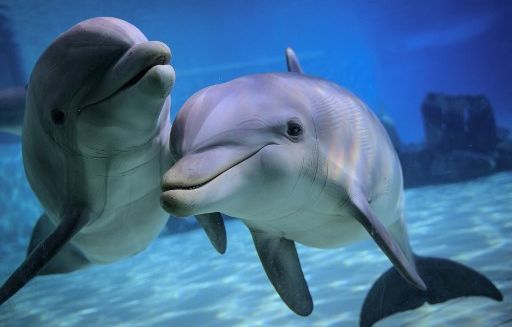Victims of overfishing, dolphin populations are collapsing in the Bay of Biscay. But for the first time, a court decision attempts to stop the massacre a little. In 2023, the number of dolphin strandings on the Atlantic coast will break all records, with around 1,500 corpses recorded. And this is only the tip of the iceberg, since it is estimated that between 8,000 and 11,000 cetaceans die each year due to accidental capture on the Atlantic coasts. A figure which “exceeds each year the maximum limit to ensure a favorable state of conservation in the North-East Atlantic”, notes the State Council.
It was contacted by three environmental defense associations (France Nature Environnement Sea Shepherd France and the association for the defense of aquatic environments) about this real risk of extinction of cetaceans. This jurisdiction took the unprecedented decision to ban fishing by French boats equipped with fixed, towed or rotating nets, the most dangerous for dolphins, for a period of one month, from this Monday. While around a thousand fishing boats frequent the Bay of Biscay, from January 22 to February 22, the number on the water could be reduced by half.
The fishermen concerned will be compensated and the downstream sector is not forgotten, “with the activation, if necessary, of partial unemployment measures and specific aid adapted to different situations,” the Ministry of Ecological Transition said on Thursday.
A little less expected strandings
How many dolphins can be saved? It is very difficult to predict the consequences on strandings of this ban on fishing for several hundred boats, because they vary greatly from one year to the next, particularly depending on the weather. But for Philippe Garcia, president of Defense of Aquatic Environments, the pressure will inevitably ease a little. “Mortality was estimated between 3,300 to 5,000 for a scenario that resembles this one, with a four-week closure, instead of 5,000 to 10,000,” he points out.
Lamya Essemlali, president of the Sea Shepherd France association, is much more reserved, even if she recognizes the merit of marking the end of a “period of denial”. “For one month of closure, scientists (from the International Council for the Exploration of the Sea, ICES) estimate that there will not be a significant drop in catches,” she regrets. They asked for a three-month fishing ban in winter and one month in summer.
The duration retained by the Council of State is insufficient for the associations involved in this issue, which are unanimously requesting four months of closure over the year, as recommended by the CIEM. Positive, Defense of Aquatic Environments hopes that this first ban will nevertheless demonstrate the interest of this measure, and objectify the loss of turnover for fishermen, today estimated in France at tens of millions of euros. “Because there will be fewer nets on the water, this will also relieve sea turtles and seabirds,” points out Philippe Garcia. And we can also consider that it is an incentive for fishermen to equip themselves (with more selective fishing tools).”
But a measure considered very insufficient
Philippe Garcia is concerned about the means available to the Cross Etel (Regional Operational Surveillance and Rescue Center) to check that fishermen are respecting the measure, while some have already announced that they will go out despite the ban. This concerns all fishing boats, including those flying foreign flags, for the sake of “fairness”, explains the Ministry of Ecological Transition, which extended it by promoting this possibility to Europe. Any vessel concerned which defies the ban in the French waters of the Bay of Biscay “will be subject to legal and administrative proceedings”, we warn.
The decision of the Council of State refers to an emergency, if we rely on data from the Pelagis observatory, which has recorded cetacean strandings since the 1970s. It estimates that if nothing is done, the population of dolphins in the Northeast Atlantic “could become extinct within forty to fifty years. » “The fishermen say that they still see a lot of dolphins, but when we can visually see that there are fewer dolphins, it will be too late,” warns Lamya Essemlali. The extinction process will already have started “.

